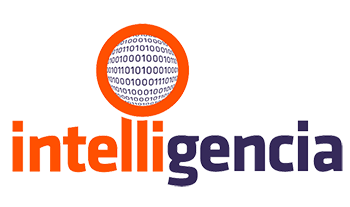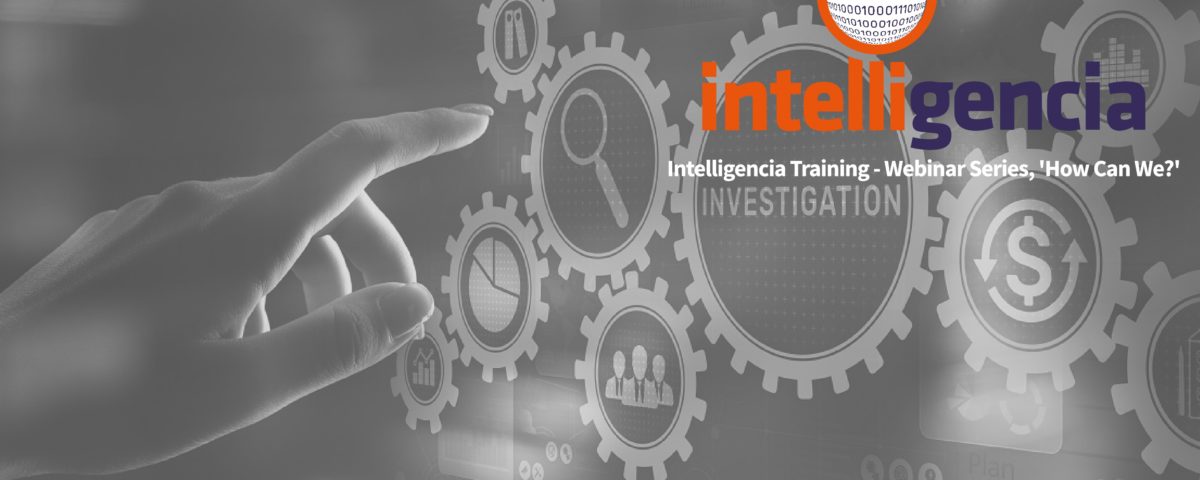
International Fraud Awareness Week: Spotting a scam
November 12, 2021WEBINAR, DEC 9th 2021: How can effective direction and stakeholder engagement lead to more effective intelligence?
December 9, 2021Introduction
Welcome to the second in the series of ‘How Can We?’ blogs, where this month we will be looking at the Intelligence sector and specifically, ‘How can effective direction and stakeholder engagement lead to more effective intelligence?’ This month’s guest blog writer is Zaul Ridley, who has a wealth of intelligence analysis experience in both the public and private sectors.
We hope you find the blog interesting and if you would like to know more, we will be releasing a webinar on the same subject on Thursday 9th December. If you would like to receive a copy of the webinar and supporting information, click on the link below to register.
About the blog writer: Zaul Ridley – Senior Operational Intelligence Trainer. Zaul has over a decade of experience in intelligence analysis, both in the public and private sector. He has worked with a variety of customers in five different countries. Prior to joining Intelligencia, his work was focussed on security, political risk, investigations, and crisis management.
Blog
I often term intelligence analysis as ‘decision support’, a term which I think neatly captures the purpose of our trade. All intelligence activity should be focused on enabling the customer to make better decisions. To do this, it is essential that we understand the requirements of those we are supporting. To ensure that the intelligence produced meets the customer’s requirements, it is important to have good relationship between the customer and the analyst. Communication is vital at all stages of the task.
Clear communication through effective direction and stakeholder engagement help create mutual understanding. Effective direction and stakeholder engagement are two sides of the same coin. For me, direction is the ‘push’ from the customer, whilst the stakeholder engagement is the analyst ‘pulling’ what they need from the customer. The customer and the analyst both share the responsibility of ensuring that the requirements are clear, well defined, and understood by both parties.
Direction in its simplest form is the customer setting a task for the analytical team, e.g., ‘to understand how protests can affect our business’. We may only need a broad overview of an issue, in which case, broad direction is fine, however the most effective direction is clear and precise. Unfocussed direction will return intelligence that is far less likely to meet the customer’s requirements. If the only direction the intelligence team receives is founded on unfocused questions, it is unlikely that the team will be able to effectively use all the analytical capability they have access to. Unfocussed direction may be a sign that we need to develop a better understanding of the issue before we can ask the appropriate questions that will help us make effective decisions.
So how, as customers, can we ensure our direction is effective? The first element of this is to spend some time actively thinking about what we want. What are we trying to achieve? What decisions do we need to make or are we likely to have to make in the future? What information will give us the insight we need to make those decisions?
It can be helpful to standardise the way in which tasks are given to the analytical team. Many organisations choose to use a ‘term of reference’, or other documents which clearly outline the direction and expectations. Timelines, priorities, product format, audience and distribution are all key pieces of direction beyond the requirement that are parts of effective direction.
While not designed for this purpose, I have found SMART (specific, measurable, achievable, realistic, timebound) criteria useful in giving direction. We can then refine our direction by moving through the SMART criteria asking ourselves questions such as; have I been specific in what I have asked for? Will I know once this question has been answered? Is the question answerable? Will the team be able to complete the task in the time? Have I set a deadline and time period for analysis?
A useful and simple tool for analysing your requirements is to ask yourself ‘why?’ repeatedly. This can help you get to the root of the issue or take a different view of it, which allows the analysts to focus on the right issue.
Effective direction at the start of the process is so valuable to the analysts, however you should also take time at the end of the process to provide feedback on the product. Every customer has different needs and the analysts will be trying to cater to yours, so help them to refine their outputs.
Good understanding is essential for good decision making. It is hard to develop this understanding in an increasingly complex and uncertain world. In this environment, we must employ intelligence-led decision-making.
The analysts will work hard for the customers, but we need to make sure that effort is focussed in the right place. To do otherwise is a waste of resources. It is very hard for the intelligence team to fulfil customer’s requirements without clear and effective direction. The whole intelligence cycle depends on good guidance from the customer. Direction is the first stage of the cycle, if we start the cycle poorly, we will almost certainly finish poorly.
Taking some extra time to clearly think about the situation and articulating what you want from your analysts is a thoroughly worthwhile investment of your time. Firstly, the additional insight gained from the intelligence will enable better decision making. Additionally, effective direction will allow the analysts to move thorough their processes more efficiently, providing you with the intelligence you need to make the complex decisions in a shorter timeframe.
As mentioned before, stakeholder engagement and effective direction are two sides of the same coin. This is where we, as analysts, actively attempt to understand what our customers need from us. This often involves support in formulating the initial requirements and will almost certainly involve subsequent refinement of these requirements.
For me, stakeholder engagement is just as important for the analysts as the quality of their work. Even the most gifted analysts in the world will not be effective without a good relationship with the customer.
Good stakeholder engagement occurs throughout the analytical process. At the pre-tasking stage, all customers should have a good understanding of the analytical team’s capabilities. Too often, there are businesses that do not make use of their analytical teams simply because they do not have an awareness of the support they can provide. An incomplete understanding of the team’s function can also lead to a misalignment between the customer’s expectations and the capabilities of the team. Comprehensive capability briefs and examples of products will give the customer an understanding what your capabilities are.
During the initial direction, stakeholder engagement is key. Miscomprehension of customer requirements at the start of the process will lead to poor output. Expectation management is also important at this stage, my personal opinion is that it is better to under promise and over deliver than vice versa. Paraphrasing is a simple tool that we can use here to ensure mutual understanding between ourselves and the customer. We could also employ more formal methods such as writing a terms of reference. When we initially receive our direction from the customer, we should be working with them to refine that direction.
After the initial direction has been set and we have ensured mutual understanding, we should maintain communication with the customer right up until the final dissemination. More often than not, how we envisage an analytical task will go is not the way it actually goes. There will likely be unexpected developments and it is important that we maintain the customer’s awareness as these occur. These developments may affect the analytical product profoundly.
Once the product has been delivered. It is essential that the analytical team seek feedback from the customer. This feedback will become the new direction and restart the intelligence cycle. Some customers will be forthcoming with feedback, others you may need to prompt for feedback. If the product was delivered as a presentation, be sure to ask the customer questions ‘did this presentation meet your requirements?’ ‘What questions remain unanswered?’ ‘What was not clear in the brief?’ If the product was a written report, scheduling in an informal chat or a phone call to talk about the product is a great way to confirm receipt and understanding.
While we should expect clear and effective direction, there will undoubtedly be times when this is absent. We share the responsibility with the customer to achieve mutual understanding. So, if the direction is lacking, we must work harder in the stakeholder engagement. Developing a good understanding of the situation is a foundational element of making good decisions. This is true for both the customer and ourselves; if we do not have a good understanding of the task, we cannot appropriately allocate our own resources.
The primary purpose of analysis is to enable better decision making. Without good stakeholder engagement we are unlikely to understand the requirements of our customers. Without this minimum understanding of what the customer needs, we will struggle to support them. Ideally, with strong stakeholder engagement, we will not only develop an understanding of what the customer needs, but also why they need it. Better understanding of the ‘what’ and the ‘why’ allows us to perform more effectively as analysts.
Our customers will often be focused on immediate issues. As analysts, if we understand our customer’s wider intentions, we can start providing a more strategic, long-term view. Not all of tomorrows issues are obvious today. Long-term assessments, or ‘horizon scanning’ are a great way to keep the customer alert to the potential risks and opportunities of the future. Good predictive assessments can change your organisation from reactive to proactive decision making and action.
Summary
In summary, both stakeholder engagement and effective management are components of good communication. To ensure that both the analysts and the customer are aligned to the same outcome, good communication is crucial throughout the process, particularly in the direction stage of the intelligence cycle.
In future editions we will be exploring other common issues in the intelligence cycle. I hope that you have enjoyed reading this blog, if you would like to know more about Intelligencia’s ‘How Can We?’ series of blogs and webinars, you can keep in touch by clicking on the link below, we will be delighted to add you to the blog distribution list and guest list for future webinars.
https://www.intelligenciatraining.com/webinar-dec-2021/

